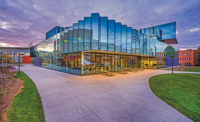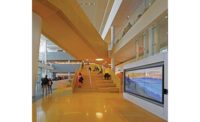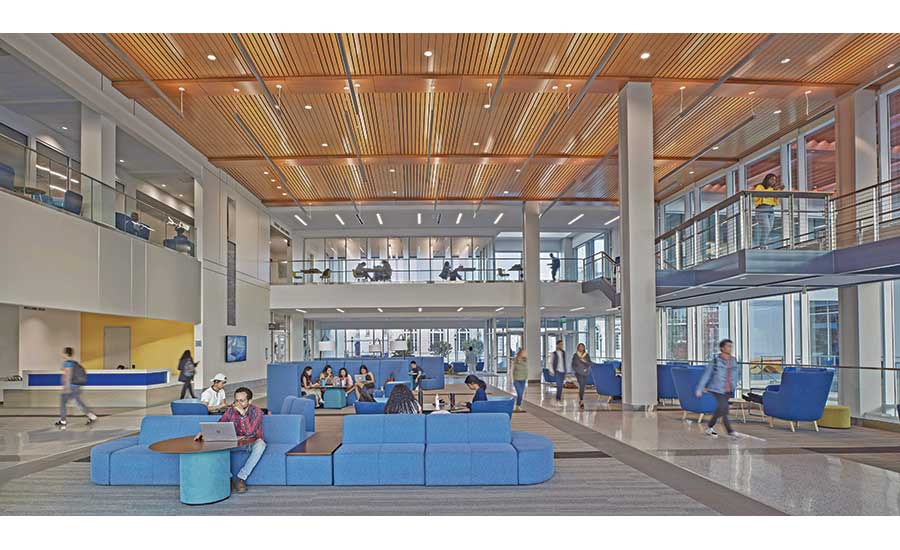ENR Southeast's 2020 Best Projects
Best Higher Education/Research: Emory Student Center

Emory Student Center
PHOTO BY ROBERT BENSON PHOTOGRAPHY

Emory Student Center
PHOTO BY ROBERT BENSON PHOTOGRAPHY


Emory Student Center
Atlanta
Best Project
Owner: Emory University
Lead Design Firm: Duda | Paine Architects
Contractor: Holder Construction
Structural Engineer: KSI Structural Engineers
MEP Engineer: IMEG Corp.
The three-story, 118,000-sq-ft LEED Platinum student center is one of the most energy-efficient buildings of its type in the country. Chilled beams combined with a customized floor-based air displacement system and large ceiling fans aid in climate control and comfort, and a solar-powered water heating system provides 40% of the building’s hot water needs. A system of 400-ft-deep geothermal wells located beneath an adjacent athletic field provides 700 tons of heating and cooling capacity. An outdoor plaza doubles as a “green roof” to reduce stormwater runoff, with low-flow plumbing fixtures helping minimize routine water use.
These and other design innovations were the result of teamwide collaboration dedicated to achieving the owner’s sustainability goals while also maximizing value. Advanced technology helped the team of Holder Construction and lead design firm Duda | Paine Architects to prototype and evaluate more than 20,000 possible window configuration combinations for the building’s facade, resulting in decisions that optimized cost and energy savings. The high-performance glass reduces solar gain and glare and features built-in sensors that aid daylight harvesting, automatically shutting off LED fixtures when sunlight is strong enough to illuminate interior spaces.
Creating this showpiece student center required demolition of the former student center and restoration of an adjacent 70-year-old campus landmark’s facade. The historic building remained operational during construction of a new shoring wall thanks to a system of temporary utility feeds. With new waterproofing, caulking, sealants, drainage and gutters, the historic building is now fully protected from natural elements for the first time in more than 40 years.
The project’s location in the heart of campus required safety planning on both sides of the construction fence. A team of flaggers shepherded up to 70 daily deliveries with no construction vehicles allowed into the area during peak pedestrian times. Maps detailing designated haul roads ensured delivery drivers would not disturb adjacent neighborhoods. Logistics plans and wayfinding signage were updated daily to alert students and staff of work activities.
Return to Southeast Best Projects Award Winners Stand Tall in 2020





